Featured Image: Ryan Chylinski Cosmic Perspective/Everyday Astronaut
Liftoff Time | November 18, 2023 – 13:03 UTC | 07:03 CST |
|---|---|
Mission Name | Starship Flight Test #2 |
Launch Provider | SpaceX |
Customer | SpaceX |
Rocket | Starship/Super Heavy |
Launch Location | Orbital Launch Pad, Starbase, Texas, USA |
Payload mass | N/A |
Where did starship go? | To space! Then blew up |
Did they attempt to recover the first stage? | No |
Where did first stage land? | It experienced an anomaly shortly after stage separation |
Did they attempt to recover the second stage? | Not on this flight, but in the future |
This was the: | – 2nd flight of the Starship/SuperHeavy stack – 1st launch of Starship to reach stage separation – 2nd launch attempt of an orbital class rocket from the state of Texas – 50th flight of a liquid fueled rocket from the state of Texas |
Where to watch | Official SpaceX replay Everyday Astronaut replay |
How Did It Go?
What a flight! In its second Integrated Flight Test, SpaceX successfully launched the Starship/SuperHeavy stack, maintained thrust in all engines, and reached hot staging. About eight minutes into flight, telemetry was lost on the second stage. The current cause of the loss of telemetry is unknown. Compared to IFT-1, Starship lifted off closer to engine ignition and lifted off with all 33 engines. No engines were lost until they were intentional shutdown for Booster Engine Cutoff (BECO) two minutes and 39 seconds into flight. Hot staging was successful and put on a beautiful display. All six engines on the Starship second stage fired and the second stage reached space at a final speed of 24,124 km/h and an altitude of 148 km.
This flight was the second launch attempt for this vehicle and involved Booster 9 and Ship 25, both of which had relatively successful testing campaigns leading up to launch. Booster 9 has completed two static fires, the second of which saw all 33 engines ignite, before a few shut down. This was a first for a SuperHeavy booster. Ship 25 saw a flawless testing campaign.
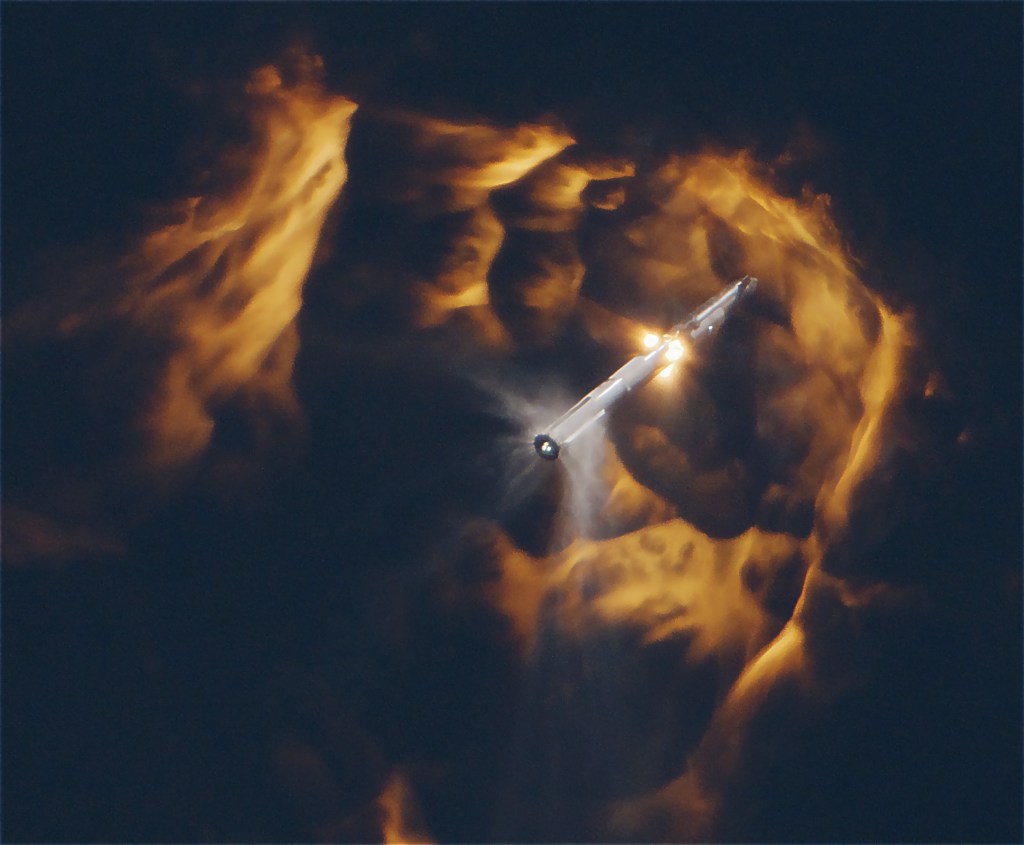
Starship Flight Test
With the second flight of a fully stacked Starship/Super Heavy comes various objectives and challenges. The end goal of this mission was for Ship 25, also known as “Starship” or the upper stage, to successfully reenter the atmosphere and land about 100 km (62 mi) off the coast of Kauai. Kauai is an island in the Hawaiian islands chain located in the Pacific Ocean. Currently, there is no known payload on Ship 25.
After stage separation, Booster 9 performed a boostback burn and then blew up over the Gulf of Mexico. If Ship 25 were to have made it to reentry, it would not have attempted a soft water landing.
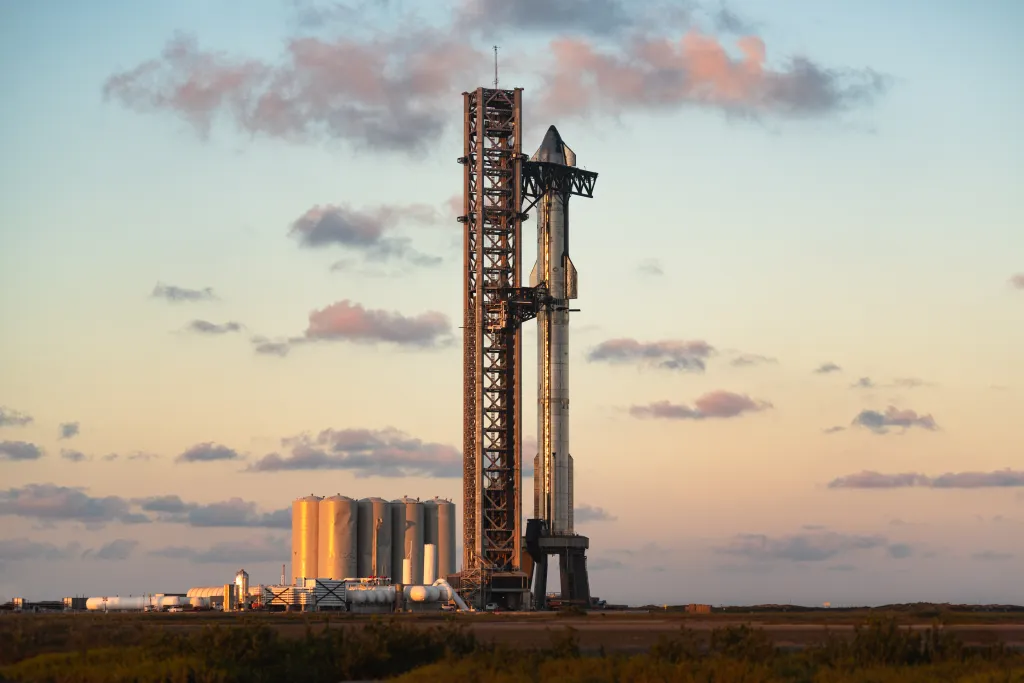
Starship Flight Number 2 Upgrades
Numerous upgrades across all areas of the vehicle and Stage 0 have been performed in preparation for the second test flight of Starship/Super Heavy. Some of these upgrades were done by SpaceX as a result of data from flight one, while other updates were performed in accordance with the 63 corrective actions outlined by the FAA.
Two of the most critical and noticeable updates include hot-staging and electronic Thrust Vector Control (TVC). The new hot-staging separation method is not new to rocketry, but a new addition in terms of Starship. As the vehicle nears it’s separation point, all six engines on the Starship upper stage will ignite while still on the booster. The ring that the upper stage is placed on has openings to allow the gases to expand outward.
The implementation of electronic Thrust Vector Control comes after an explosion rendered a hydraulic power unit inoperable, disabling the booster’s Raptor engines ability to control its direction of thrust. With new mounts controlled with electric motors and systems, the engines are now more isolated.
Another quintessential item from the viewpoint of safety is an upgraded Flight Termination System (FTS). During flight one, the destruction of the vehicle occurred 40 seconds after the FTS termination command was sent, an event that should happen instantly. Upgrades essentially include more explosives to provide a more guaranteed termination during an anomaly.

The Pad
In the days prior to launch, Ship 25 will be placed on top of Booster 9 via the chopstick arms, also known as “Mechazilla.” Once on top, the arms will release and open wide near the top of the tower in order to swing as far away from the stack as possible. These chopstick arms are designed to catch both the booster and ship on future missions.
In light of the previous test flight, SpaceX has installed a number of new measures on and near the launch pad in order to protect the pad. One of the major additions includes a water-cooled steel plate mounted directly underneath the Orbital Launch Table. Before ignition, water gets sprayed up from and around the steel plate to provide cooling and sound dampening.
That being said, there is no flame trench such as seen on other launch pads, so the exhaust from all 33 engines will be able to spread in all directions. The steel plate acts as a flame diverter since it diverts the flame from immediately contacting the concrete.
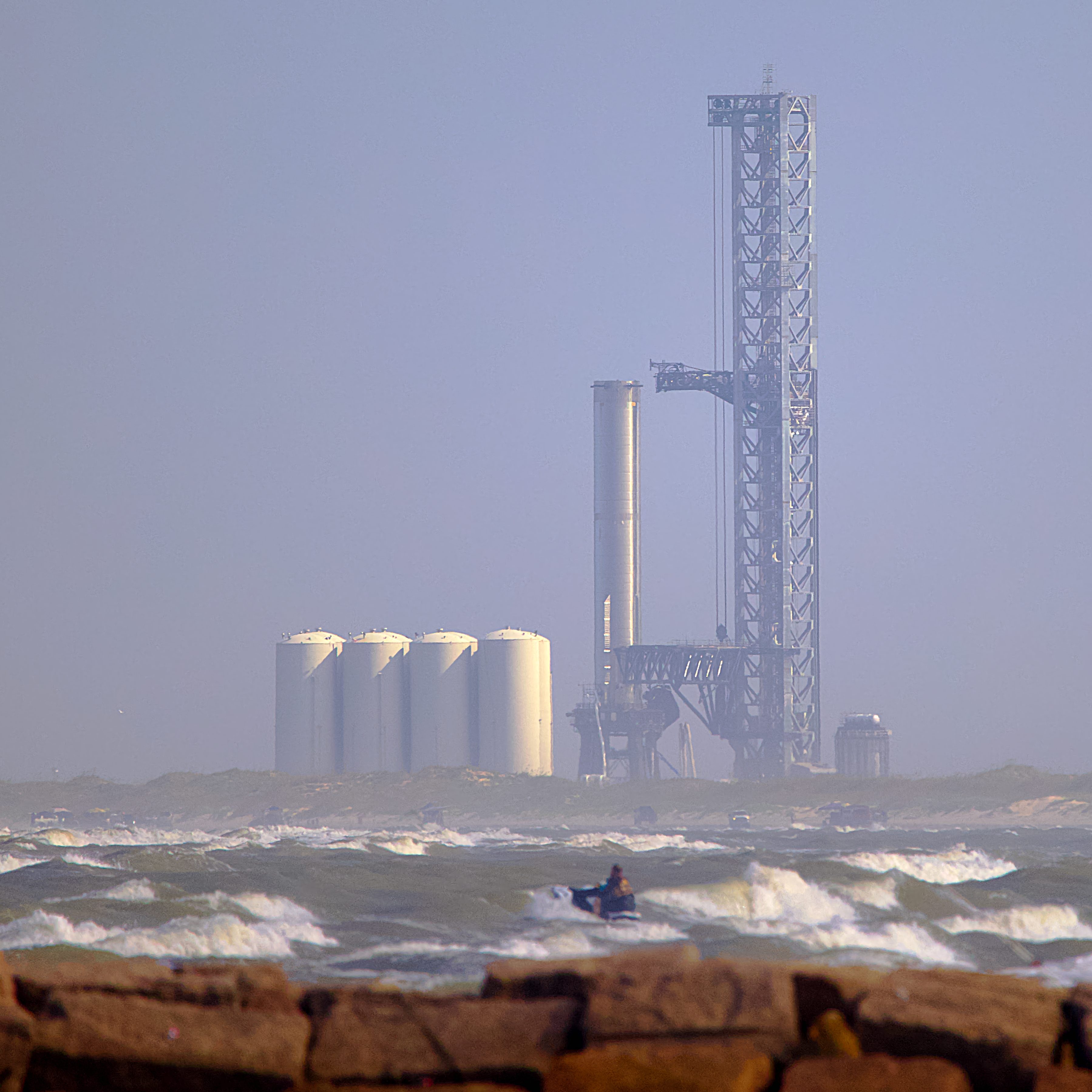
Launch Viewing
The closest in-person viewing point is expected to be on South Padre Island about eight kilometers (five miles) away. Despite uncertainties in the exact dimensions of the exclusion zone, it will certainly be large due to the size of Starship/SuperHeavy and the fact that it is an unproven rocket.
If attending in person is not an option, Everyday Astronaut will be live on location from Studio B with views all around the island and pad. Tim will be available to answer questions. A livestream link can be found here once we get closer to launch.
SpaceX is also expected to have an official live stream on X (formerly Twitter).
Starship/Super Heavy
For the past seven years, SpaceX has been developing their facility in Boca Chica, Texas. They have dubbed it “Starbase” and it contains tents, bays of various heights and widths, as well as all the infrastructure to produce the world’s largest and most powerful rocket. Information on the test campaign can be found in the “History” section below.
The full stack consists of two vehicles, each with different jobs relating to the launch process. On the bottom is the booster, also known as Super Heavy, which makes up about 58% of the full stack. The orbital ship rests on top of the booster to enable easy separation during staging.
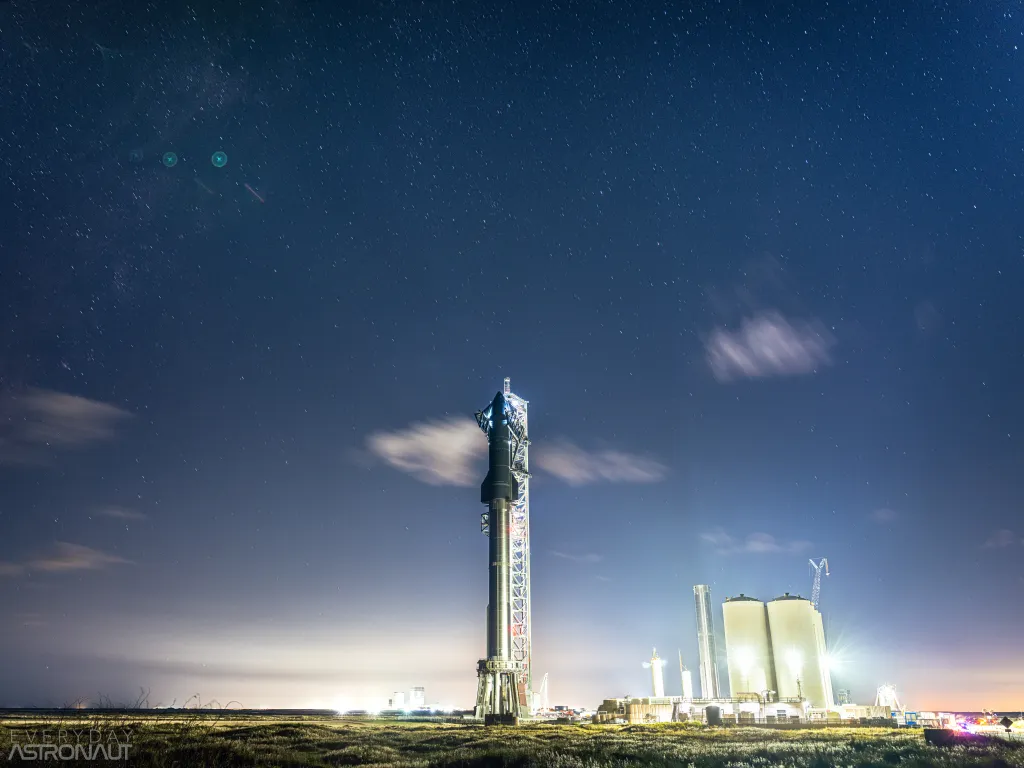
The Booster
The booster, or bottom part of the rocket, is powered by 33 Raptor 2 engines formed in a series of rings standing 69 m (230 ft) tall. To fuel all 33 engines, uses a liquid oxygen (LOx) tank and a methane (CH4) tank on the bottom and top, respectively. The booster is fueled by the Booster Quick Disconnect (BQD) which is located on the Orbital Launch Table and connects to the booster near the bottom.

Shortly before the booster experiences first motion, the BQD retracts and a protective door rapidly shuts in order to prevent the connections from getting blasted by rocket engine exhaust. Near the bottom of the booster are four elongated triangular chines. Each of these contain Composite Overwrapped Pressure Vessels (COPVs). The COPVs provide helium and other gasses for engine start up and other functions on the booster. The square trapezoidal pyramids mainly contain electronics units.
On the top of the booster are four grid fins which provide control during booster descent through the atmosphere. These work similarly on the Falcon 9, however are much larger on Super Heavy.
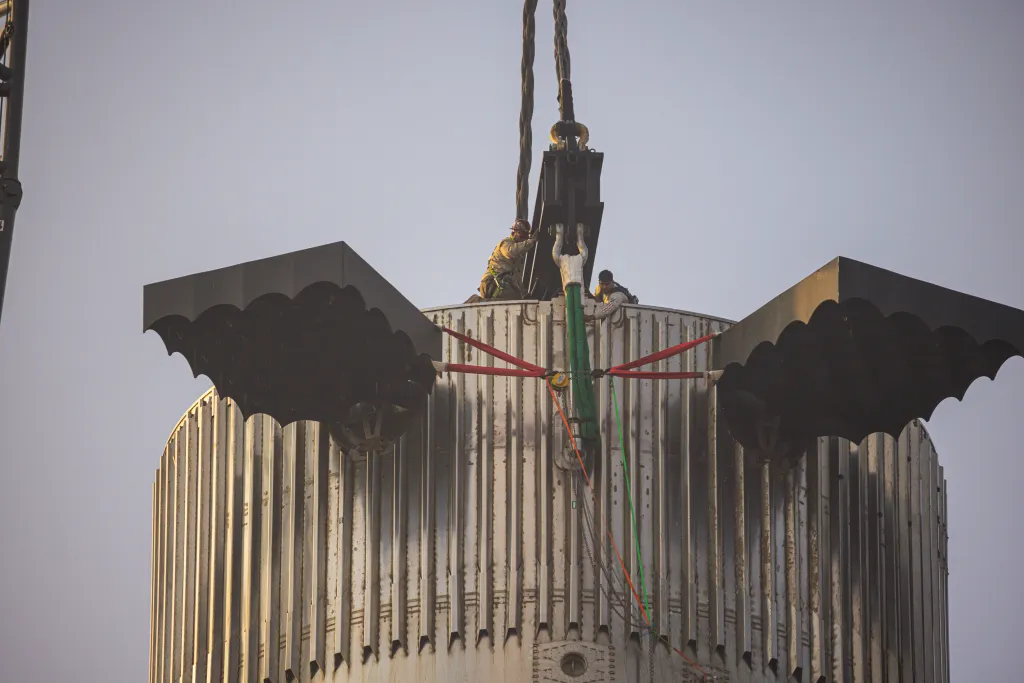
All 33 sea-level Raptor 2 engines are arranged in three clusters or rings. The three inside engines form a triangle and have the ability to gimbal. The next ring contains 10 engines which also have the ability to gimbal. Finally, the outer ring contains the remaining 20 engines that do not have the ability to gimbal.
The Ship
The Ship, or top part of the rocket, is powered by three sea-level Raptor 2 engines, and three vacuum optimized Raptor 2 engines, standing an overall 50 m (160 ft) tall. The three vacuum optimized engines have elongated bells to adapt to the lack of air pressure in space. To learn more about Raptor engine development, check out Everyday Astronaut’s video “How SpaceX Is Upgrading Raptor To Be The Ultimate Rocket Engine!“
On the bottom of the ship is a skirt which encloses the engines and provides a structural element for the booster and ship to connect. Unlike the Falcon 9, the interstage section on starship is on the ship and the top of the booster is the hot staging ring. During stage separation, all six Raptor engines on Starship will ignite, pushing the vehicle away from the booster. This is possible because of the addition of a hot stage ring that allows the exhaust from Starship’s engines to expand outwards.

The bigger of the two sets of flaps, the aft flaps can work in conjunction with the three center mounted sea-level engines which gimbal, to orient the ship during entry, descent, and landing. On the top of the ship, are the slightly smaller forward flaps that also aid in ship orientation during entry, descent, and landing.
About two-thirds of the way up the vehicle is the payload bay. Designed for Starlink satellites, there is a narrow door that deploys one satellite at a time. Sometimes called the “PEZ dispenser,” named after the popular candy, the internal structure of the payload bay is specially designed to deploy Starlink satellites in this manner.
COUNTDOWN
All Times Approximate (countdown has changed slightly from IFT-1)
| HR/MIN/SEC | EVENT |
|---|---|
| 02:00:00 | SpaceX Flight Director Conducts Poll and Verifies Go for Propellant Load |
| 01:37:00 | Booster LOX (Liquid Oxygen) Load Underway |
| 01:37:00 | Booster Fuel Load (Liquid Methane) Underway |
| 01:17:00 | Ship Fuel Load (Liquid Methane) Underway |
| 01:13:00 | Ship LOX Load Underway |
| 00:19:40 | Raptor Begins Engine Chill on Booster |
| 00:00:10 | Flame deflector activation |
| 00:00:03 | Raptor Ignition Sequence Begins |
| 00:00:00 | Excitement Guaranteed |
FLIGHT TEST TIMELINE | BEST CASE SCENARIO
Completion of the milestones below are not required for a successful test, but each milestone completed will certainly make for an exciting test. All times approximate.
| HR/MIN/SEC | EVENT |
|---|---|
| 00:00:02 | Liftoff |
| 00:00:52 | Max Q (Moment of Peak Mechanical Stress on the Rocket) |
| 00:02:39 | Booster Main Engine Cutoff |
| 00:02:41 | Hot Staging |
| 00:02:53 | Booster Boostback Burn Startup |
| 00:03:47 | Booster Boostback Burn Shutdown |
| 00:06:18 | Booster is Transonic |
| 00:06:30 | Booster Landing Burn Startup |
| 00:06:48 | Booster Landing Burn Shutdown |
| 00:08:33 | Starship Engine Cutoff |
| 01:17:21 | Starship Entry |
| 01:28:43 | Starship is Transonic |
| 01:30:00 | An exciting landing! |
Starship Program History
For nearly all of its lifetime, the Starship program has resided in south Texas, at Starbase. The area where Starbase resides has progressed through many names over the past decades. The town where Starbase is located was originally called Kennedy Shores. After a hurricane it was renamed Kopernik Shores, and most recently known as Boca Chica.
Originally purchased in 2014, the land in the area of Boca Chica gradually fell into SpaceX’s hands. For the next four years, progress was fairly dormant, despite some occasional ground work. In 2018, a water tower-like structure first stood on the paper-flat landscape. This “water tower” would be later known as Starhopper, a Raptor engine test vehicle.
Test Hops
Starhopper flew untethered for the first time on July 25, 2019 under the power of one Raptor engine serial number six to a height of 20m (65 ft). A little over a month later, Starhopper would fly for the second and final time, reaching a height of 150m (500 ft). The main purpose of Starhopper was as a Raptor flight test vehicle. Presently, Starhopper remains at the launch site, covered in speakers, cameras, and other communication and monitoring equipment.
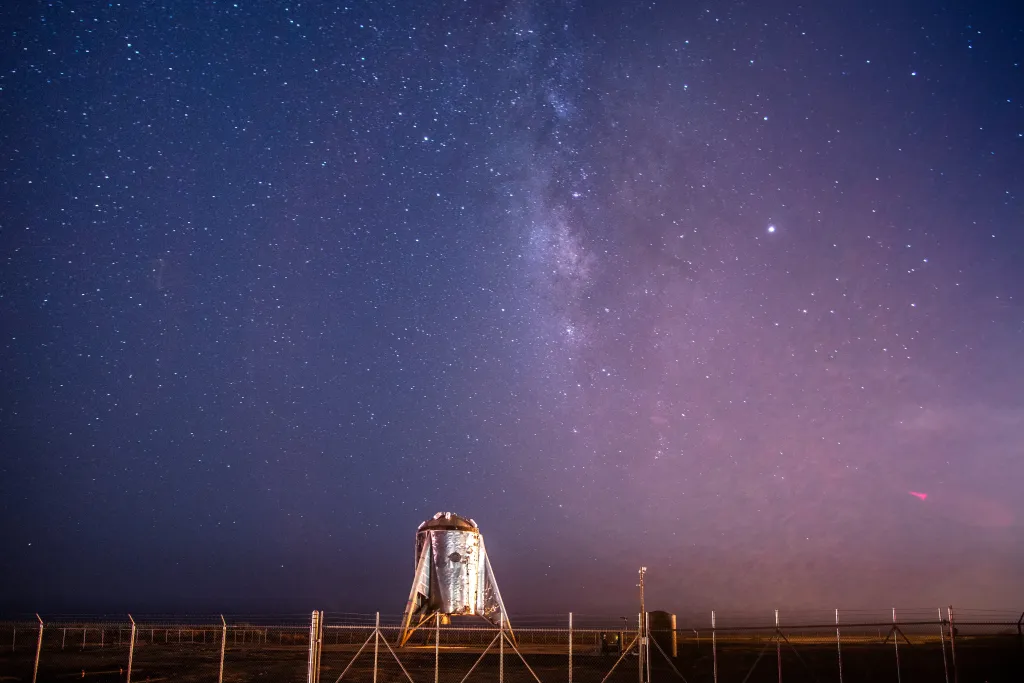
Two more test vehicles would fly to a height of 150m (500 ft), SN5 and SN6. However, before these two successes came a spectacular malfunction of SN4. While conducting a static fire test, SN4 suffered an explosion, or a rapid unscheduled disassembly, which quickly ended it’s testing career. SN5 and SN6 would launch a year after Starhopper, about one month apart.
First Flights
At this point, SpaceX transitioned to higher flights which would utilize three Raptor engines and aimed to test the belly flop, flip, and landing maneuver. The first Starship to attempt this maneuver would be SN8, which launched on December 9, 2020 and flew to an altitude of 12.5 km (41,000 ft). Flying for a total duration of six minutes, 42 seconds, the flight concluded in SN8 crashing on the landing pad. A sudden pressure loss in the methane header tank caused the engines to stop producing thrust, resulting in a rapid unscheduled disassembly of the vehicle.
SN9 would be next up in line to attempt a successful landing. SN8 had already proved that Starship could perform a belly-side-down dive, relight it’s engines, and (partially) flip over. During construction, SN9 fell over in the High Bay which caused concern for its structural integrity. SN9’s flight was the same as SN8, however, it only traveled to 10 km (33,000 ft) in altitude. Upon landing, one of it’s three Raptor engines failed to relight resulting in an over rotation of the vehicle. SN9 landed at a slight angle and exploded on the landing pad.
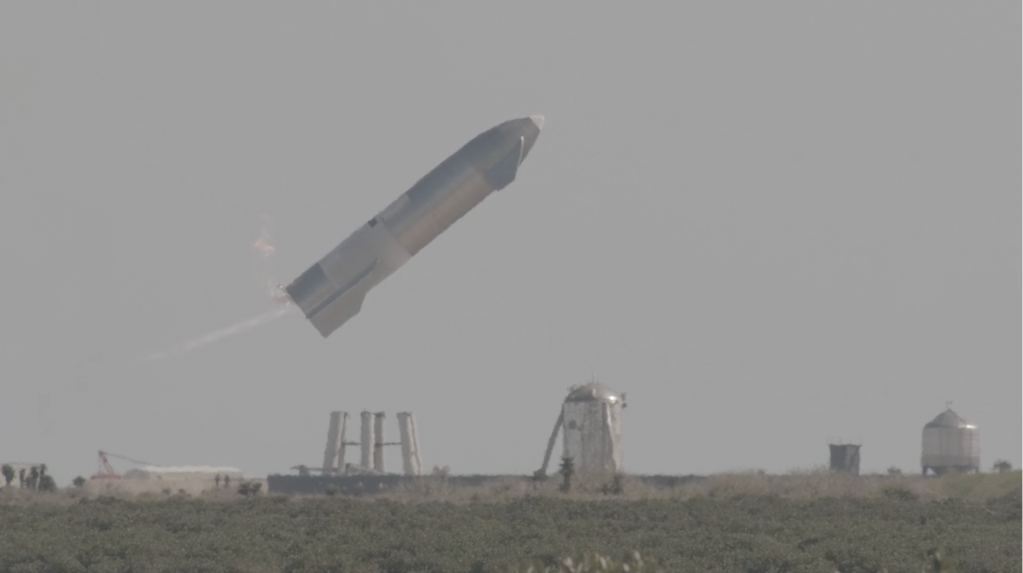
SN10’s flight came with an emotional roller coaster. As its predecessor did, SN10 flew to 10 km (33,000 ft) and performed is descent maneuver as designed. The flip and engine relight went smoothly, but a hard touchdown damaged the skirt and fragile landing legs. After standing poised on the landing pad, about eight minutes later, SN10 also exploded in a massive fireball.
Explosion And Success
SN11 still remains a large mystery. Due to the abnormally dense and low lying fog, the entire flight was entirely obscured, leaving the only evidence of flight to the in-person observer, the sound, and a still image captured by Trevor Mahlman. Upon relight and shortly before landing, SN11 rapidly exploded scattering debris across the area around Starbase for miles. The only visuals of this explosion were from ground based cameras that saw debris falling from the sky.
Finally, SN15 was the first Starship prototype to fly to 10 km (33,000 ft), dive down on its belly, flip, and land successfully. The prototypes between SN11 and SN15 allowed for necessary upgrades which enabled a successful landing. While a small fire ignited underneath the vehicle, it was quickly extinguished allowing SN15 to live on. Currently, SN15 sits with other vehicles in the Rocket Garden.
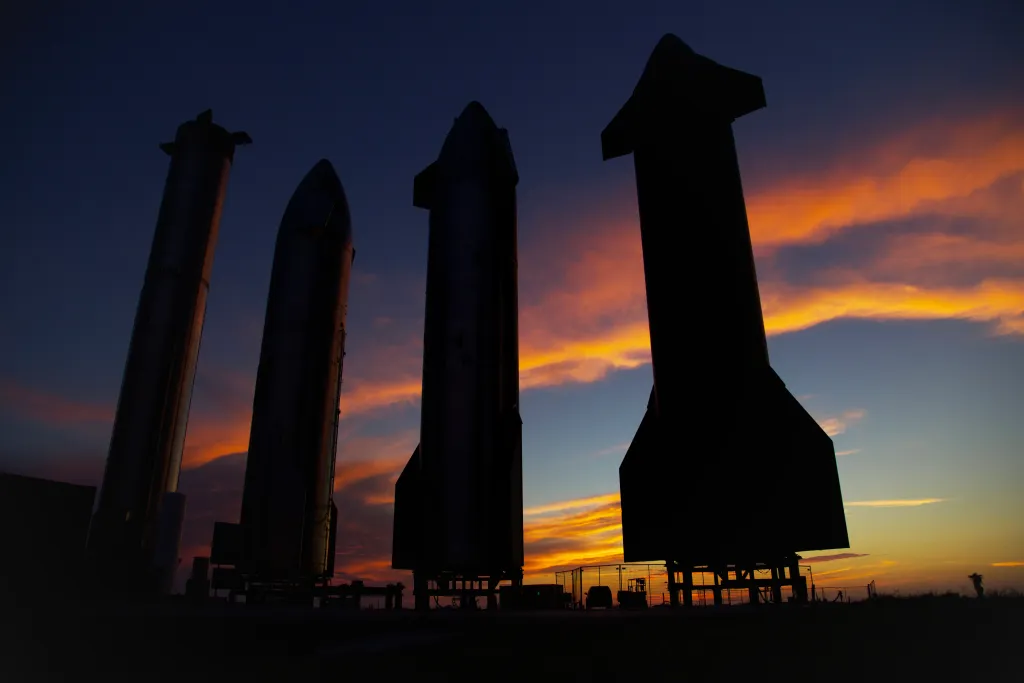
Recent Updates
Although SN15, which flew almost two and a half years ago in May 2021, was the last flight from Starbase, testing and rapidly accelerated construction has progressed and changed the landscape. Some highlights of this construction include the completion of the Orbital Launch Tower and Orbital Tank Farm. Both of these elements, in conjunction with the Orbital Launch Table, are essential parts of Stage Zero. Stage Zero is, simply put, the launch pad and supporting equipment that enables an orbital launch.
As far as rockets go, SpaceX tested BN3 (Booster Number 3) marking the first static fire of a booster prototype on July 19, 2021. BN3 was quickly scrapped a month later, but paved the way for B4 (Booster 4), which never performed a static fire test, but was part of the first full stack of the Starship/SuperHeavy launch system.
Conclusion
All of the previous test articles paved the way for Booster 7 and Ship 24 to conduct the first orbital flight test. Each explosion, successful landing, static fire test, cryogenic proof test, and even simple rollouts to the pad have allowed SpaceX to test critical elements in preparation for orbital flight. As did B7 and S24, Booster 9 and Ship 25 will, without fail, gather data for future flights much further beyond Earth orbit.





I think you either meant “jets” or “gets sprayed” here: “Before ignition, water gets spray up from and around the steel plate to provide cooling and sound dampening.”
Keep up the great work Tim, I’m a huge fan and tremendously appreciate your excellent SpaceX and Rocketry education content.
Thank you for catching that!
Although I enjoy your YouTube videos, it was really nice to be able read an article, so well written, with photos, that I can easily navigate, focus on certain parts, and skip other parts. So thanks for that, and Congratulations on making it onto Google’s Front News Page (at least for me)! – I guess I need to check out your website in more detail! Keep up the good work and Peace!
Many thanks to the people that made this possible “practice makes perfect” and Elon Musk is in charge of ALL this effort
Great article. Easy to understand, informative, and well written!
Thank you.
PS: “… As it’s predecessor did, SN10 flew to 10 km (33,000 ft) and performed IS descent maneuver as designed. …” (probably “its”). Also, “it’s” and “its” is used interchangably. “It’s” is a contraction of “it is”. I do this all the time, especially when typing. I hate to leave this in a public comment because it feels nitpicky and silly but I’m trying to help 🙂
in the history section it says
spotted a typo:
“a hydrolic power unit inoperable, disabling the booster’s Raptor engines ability to control its direction of thrust. With new mounts *controled* with electric motors and systems”
should be *controlled*
Cant wait for Friday!!! 🤞🤞🤞🤞🤞🤞🤞🤞🤞
I am a child of the space age. Born in 1951, I’ve observed the many attempts and failures of NACA’s (and later on NASA’s) early attempts to place an object into Earth Orbit., culminating in the success of the Mercury-Redstone Three mission, which put Alan Shepard into space on a mission that lasted approximately 15 minutes (all of this is off the ‘top of my head’, so to speak). Yes, there were successes as well as failures. In the end, we kept pressing ahead, and ultimately succeeded in putting both Neil Armstrong and Buzz Aldrin on the surface of our moon. It was a long process, but it proved in the end that America could do what it really set out to do. SpaceX is a company out of the same mold — it has proven to be a challenge, and a challenge that Elon Musk has been eager to accept. Regardless of the results of this second test flight, we (or SpaceX, if you will), will learn enough to make missions to Luna, as well as Mars possible (and hopefully, routine).
it would be really helpful in the future to include a widget to convert the launch and livestream times to your local time zone! not all of us are in the US 🙂